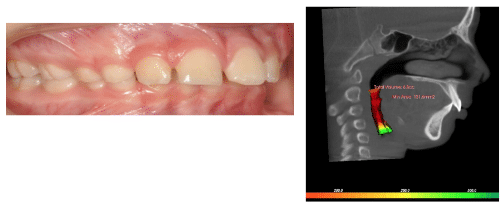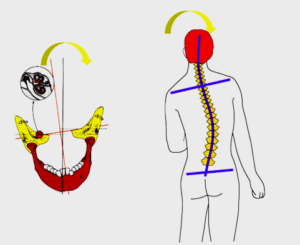Appointment
Treatment Philosophy
We believe that all human body parts have a specific function. Our teeth and our bite are no exception. At E Line Orthodontics, we aim at restoring the masticatory organ function so that it may support life and radiate a beautiful smile as a consequence of an ideal function. After all, a beautiful smile may not always be functional, but a functional smile is always beautiful!
We acknowledge the importance of smile aesthetics in promoting self-confidence, socialization, and attainment of well-being as a whole. However, aesthetics alone in absence of ideal masticatory function has demonstrated to be detrimental to our health, both locally and distantly.
At E Line Orthodontics, we view malocclusion from an adaptive and holistic perspective where the masticatory organ not only serves to chew food, but also contributes to regulating the autonomic nerve system. Malocclusion was never a disease but a perfectly normal adaptation and compensation to what our body and oral environment provided to our teeth. From breathing to body posture, autonomic nerve system regulation to hearing and vision, our bite is closely linked to many important and vital functions beyond aesthetics!
For many diseases and ailments, our teeth and bite have become a significant contributor or even the principal etiological factor. Some of these conditions are:
- Headaches/TMJ/ear pain
Our teeth provide support to the Temporal-Mandibular Joint (TMJ) so that adequate space exists between the lower jaw, the meniscus (or disc) and the cranial base. Despite the fact that there are numerous factors affecting your TMJ health including genetic predisposition to suffer arthritis and joint breakdown, it has been experimentally shown and longitudinally observed, that a bite lacking ideal joint space or unable to provide joint stability will experience different degrees of TMJ degenerative changes. These changes many times are accompanied by pain symptoms affecting the TMJ itself, temporal area, ear, neck and different parts of the face and head.
- Breathing Alteration
 Our teeth are also associated with breathing due to its close relationship between the bite and the shape of our face. An individual with a long face with or without open bite will most likely have a constricted upper dental arch forcing the tongue to position on the floor of the mouth (rather than on the roof). This low resting tongue position is not only associated with mouth breathing pattern but also constricts the upper airway by keeping the tongue muscles back. Contradicting conventional wisdom, breathing problems also affect individuals with prominent chin and under bites. A long list of conditions including chronic respiratory infection, allergies, TMJ changes, facial morphology changes, poor sleep quality,
Our teeth are also associated with breathing due to its close relationship between the bite and the shape of our face. An individual with a long face with or without open bite will most likely have a constricted upper dental arch forcing the tongue to position on the floor of the mouth (rather than on the roof). This low resting tongue position is not only associated with mouth breathing pattern but also constricts the upper airway by keeping the tongue muscles back. Contradicting conventional wisdom, breathing problems also affect individuals with prominent chin and under bites. A long list of conditions including chronic respiratory infection, allergies, TMJ changes, facial morphology changes, poor sleep quality,
sleep apnea, decrease in cognitive skills, lack of concentration, high blood pressure,
diabetes and more can be attributed to breathing disturbances.
- Homeostasis
While we sleep we not only provide needed rest to our brain and body, but also neutralize many activities driven by the sympathetic nerve system. Sleep studies repetitively show that after the sympathetic nerve activity increases (raising the blood pressure and the heart rate), an involuntary tooth grinding activity (aka bruxism) appears and sympathetic nerve activity decreases while the parasympathetic activity climbs reversing the effects of the initial sympathetic activity. For some, the sleep findings may only be coincidental without causative finding. However, a large list of animal studies aimed at determining the effect of bruxism upon different situations and environment concluded that the effect of teeth grinding is beneficial to the health affecting long distant organs controlled by the autonomic nerve system. In humans, in addition to sleep studies, experimental FMRI studies were done using a strong siren to evaluate the sympathetic effects. Those who were biting and grinding a wood stick (while hearing the siren) did not experience the steep elevation of sympathetic nerve activity, neither increase of blood pressure, heart rate, breathing rate, etc. It can be concluded that grinding is a beneficial physiologic event that contributes to our overall health in absence of malocclusion that may invite dental tissue breakdown.
- Dental tissue breakdown and cavity
When a malocclusion is present and dental crowding, flare teeth, constricted jaw, etc. exists, it is common to find teeth that receive a high level of pressure (interference) during physiologic mandibular movements. This interference will ultimately cause our teeth and surrounding bone tissues to break down causing dental sensitivity, cavity, and periodontal disease despite practicing a good oral hygiene habit. When posterior teeth undergo attrition, your face will shorten and give an aged looking appearance. At the same time, the temporal-mandibular joints become less supported and the relationship inside the joint capsule also change. Your body may positively adapt to the changes within the temporal-mandibular joint but if the change is beyond adaptive limits, visually noticeable facial change (e.g. recessed chin) and or other TMJ symptoms (e.g. clicking, pain) may well arise.
- Posture alteration
 Our head weighs a bit over 1/10 of the body weight and finds support on two small cervical bones. A complex and delicate muscle system holds the head in place balancing our entire body to keep it straight. In a person with an altered jaw position such as when the jaw is deviated, recessed or prominent, this fine balance between the head and the body is disrupted. The same is true when other parts of our body (e.g. rotated pelvic bones, forward positioned neck, flat foot, etc.) is misaligned originating postural changes. Postural adaptive and compensatory mechanisms are introduced to allow movement and weight distribution. Comprehensive correction of posture alteration includes not only orthodontics but physical therapy and even interventional optometry therapy if vision has been affected.
Our head weighs a bit over 1/10 of the body weight and finds support on two small cervical bones. A complex and delicate muscle system holds the head in place balancing our entire body to keep it straight. In a person with an altered jaw position such as when the jaw is deviated, recessed or prominent, this fine balance between the head and the body is disrupted. The same is true when other parts of our body (e.g. rotated pelvic bones, forward positioned neck, flat foot, etc.) is misaligned originating postural changes. Postural adaptive and compensatory mechanisms are introduced to allow movement and weight distribution. Comprehensive correction of posture alteration includes not only orthodontics but physical therapy and even interventional optometry therapy if vision has been affected.
